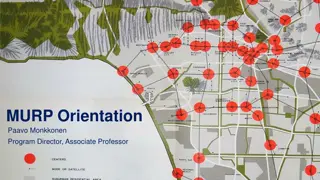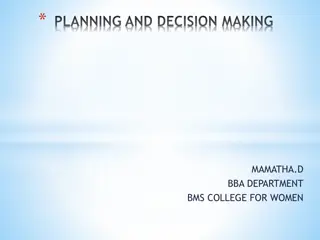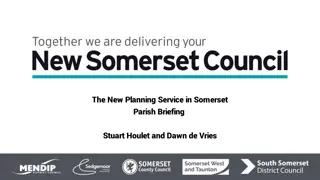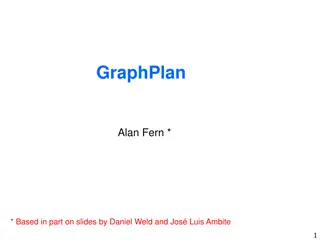
Key Responsibilities of Public Community Action Boards
Discover the key responsibilities of public community action boards in this informative training material. Learn about mission planning, engagement, funding management, performance, and accountability. Gain insights into the power of tripartite boards through a case study and engage in planning exercises to enhance your Community Action Agency's strategic planning under CSBG guidelines.
Download Presentation

Please find below an Image/Link to download the presentation.
The content on the website is provided AS IS for your information and personal use only. It may not be sold, licensed, or shared on other websites without obtaining consent from the author. If you encounter any issues during the download, it is possible that the publisher has removed the file from their server.
You are allowed to download the files provided on this website for personal or commercial use, subject to the condition that they are used lawfully. All files are the property of their respective owners.
The content on the website is provided AS IS for your information and personal use only. It may not be sold, licensed, or shared on other websites without obtaining consent from the author.
E N D
Presentation Transcript
Board Roles & Responsibilities: Public Community Action Agencies PRESENTED BY: [Trainer Name] [Training] [Date] [Trainer Website or Email] [Trainer Phone Number] [Trainer Logo]
This training material was created in collaboration with Community Action Program Legal Services, Inc. (CAPLAW) and the Community Action Partnership (Partnership). The publication was created by National Association of Community Action Agencies - Community Action Partnership in the performance of the U.S. Department of Human Services, Administration for Children and Families, Office of Community Services Grant Number 90ET0465. Any opinion, findings, and conclusions, or recommendations expressed in this material are those of the authors and do not necessarily reflect the views of the U.S. Department of Health and Human Services, Administration for Children and Families. 2
Key Responsibilities of the Tripartite Board 3
Key Board Responsibilities Mission Planning Engagement Maintain and Grow Funds Performance Accountability 4
Public CAA Case Study: Power of a Tripartite Board 5
Key Board Responsibility Planning 6
Planning Exercise Name at least one of each of the following in relation to your CAA: Strength Weakness Opportunity Threat 7
Planning Under CSBG Community Action Plan 3-Year Review (Community needs assessment/CSBG- specific) Strategic Plan 5-Year Review (Organization-wide) 8
Development of Strategic Plan Community Action Partnership & CalCAPA resource available at: https://communityactionpartner ship.com/publication_toolkit/a- comprehensive-guide-to- community-action-strategic- planning-final-5/ 9
CSBG Organizational Standards Planning CSBG Org. Standard 6.1: The department has a strategic plan, or comparable planning document, in place that has been reviewed and accepted by the tripartite board/advisory body within the past 5 years. If the department does not have a plan, the tripartite board/advisory body will develop the plan. CSBG Org. Standard 3.1: The department conducted or was engaged in a community assessment and issued a report within the past 3 years, if no other report exists. CSBG Org. Standard 3.5: The tripartite board/advisory body formally accepts the completed community assessment. 10
Engage in Planning Approaches to help the tripartite board meet its planning and strategy development obligations: Form a planning/strategy committee Uses the strategic plan to frame board discussions Use a strategic agenda 11
Strategic Agendas Strike a balance between routine agenda items (e.g., contract approvals etc.) and strategy discussions How will agenda items and information provided to board members help tripartite board: Connect with the CAA s mission Enhance board functioning Provide oversight Identify and make decisions on key issues
Consent Agendas Used for routine, procedural, informational, and self-explanatory non-controversial items Helps streamline meetings If using, be sure to educate board members on: Purpose , i.e., not used to force through decisions Process, i.e., allows for removal of item upon request 13
Strategic Dashboard Income by Type Financial Indicators Last Target This month Last month year end Surplus/(deficit) YTD $270,000 $390,842 $340,908 ($570,240) Income Statement Direct federal grants 14% Surplus/(deficit) year-end forecast $270,000 $30,937 $250,987 ($570,240) Program Fees 10% Earned income ratio 11.5% 10.3% 11.8% 13.0% State Grants & Contracts 56% Individual Contributions 4% New grants success ratio 50.0% 35.0% 33.0% 50.0% Days cash on hand (unrestricted) 45 43 28 51 County Grants 16% Balance Sheet Reserve funds balance (1 month payroll) $250,000 $200,000 $150,000 $250,000 Current ratio 2 to 1 5.8 4.2 6.2 Cash Flow AR aged over 90 days 15.0% 22.3% 23.5% 20.0% $800,000 $700,000 Program Indicators $600,000 Last Target This month Last month $500,000 year end Weatherization Contracts (monthly goal) $400,000 20 21 22 15 $300,000 Head Start enrollment 100 60 58 109 Jan Feb Mar Apr May Jun Jul Aug Sep Oct Nov Dec Actual Projected Target = $615,000 minimum Monthly job placements 30 11 14 32 15
Agenda Exercise Describe your CAA s current board meeting agenda List what items on the agenda may be suitable for a consent agenda List the items that require the board to think strategically 16






















